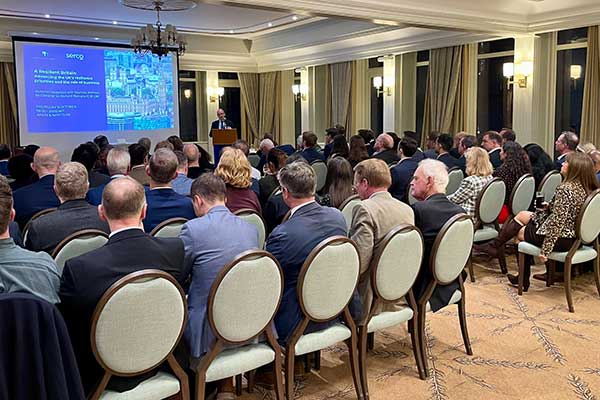Robert Hall, Executive Director, Resilience First
In 2017 the UK Government introduced the idea of resilience lessons in secondary schools to help children cope with the stresses and strains of modern life.
The curriculum would be part of Personal, Social, Health and Economic (PSHE) classes and one purpose was to guide youngsters away from extremism, as part of the government’s CONTEST programme.
The PSHE initiative is a marker as, in general and by way of tradition, we don’t deliberately teach children about resilience.
In their upbringing, we usually don’t mention notions of redundancy, bereavement, divorce, serious illness or so on unless we have to, but we do expect them to cope with such traumas.
Often, they surprise us with their robustness to such challenges. Some have a natural and strong capacity to be resilient, bouncing back from many of life’s painful challenges.
But there is another side to this coin as youngsters can also teach adults about resilience.
If a child without the experience of life possessed by an adult can be resilient then it would be reasonable to surmise that experience is not necessarily or universally a prerequisite for resilience.
It is the very lack of appreciation of all the practical hurdles, human frailties, resource constraints, etc, that do not cloud a child’s ability to bounce forward.
It is more about a mindset to deal with the here and now, and not overly worry about the potential pitfalls.
Children can reveal much about the flexibility needed to cope with change. Children and youth are agents of change, and have the plasticity to learn and adapt.
As the pace of the technological revolution in particular increases, then youngsters are well placed (if prepared) to create a portfolio of work as the jobs market demands new and varied skill sets.
The idea of holding the same job for 15 years – or even for five years – is rapidly becoming redundant so constant re-skilling will be needed.
Children can be more receptive to this flexible approach than adults in their 30s, 40s or 50s, when preferences have been identified and confirmed, but they need to be helped to adjust as early as possible.
One further aspect, which relates to the role children play in disaster management: youngsters are as affected as anyone caught up in a major incident.
Under Article 12 of the UN Convention on the Rights of the Child, children and young people have the right to be heard on matters that affect them.
Awareness of that Right amongst disaster reduction and management actors remains low. Yet, children are not only highly concerned about their families and neighbours but also have an eagerness to help care for their communities.
They want to learn more about risks and emergencies and can help shape information and support services for others.
In Gandesa, Spain, for instance, forest fire prevention and management measures have been stepped up since local children started to work on the topic.
Youngsters have also been instrumental is help shape flood recovery programmes in the UK (see ‘Children, Young People and Flooding: Recovery and Resilience’, available here).
Resilience is evident at the more local levels as well. A school was having difficulty preventing parents parking on yellow lines when dropping off or collecting children. Nothing seemed to work. However, by targeting the children with road safety messages and identifying offending cars, parents were shamed into complying by the children themselves.
Resilience is about changing behaviours to provide better safety and security for all and by looking to younger generations there is a huge amount we can all learn.
For further reading, please visit our Knowledge Hub.



